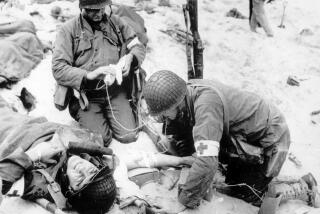AIDS Adds to Epidemic History
Nancy Peterson Walter (Letters, March 1) should not be bitter about the actions taken in South Milwaukee years ago when her father was dying of polio.
Before the discovery of the “miracle” drugs, which are so commonplace today, the only effective method of preventing the spread of certain diseases was to isolate the patient (and, in some cases, those who had been in close contact with that patient). Most cities maintained an isolation hospital (called a “pest-house”) from the community to prevent epidemics resulting from contact with others. For when such epidemics did occur, many deaths occurred that might have been prevented if the first person stricken had been quarantined immediately upon diagnosis.
Smallpox was particularly deadly until a preventive vaccine was developed. Every child in my school had to be vaccinated or stay out of school for several weeks. I still have the scar from the needle on my upper arm, but I didn’t catch smallpox. Now smallpox has been all but eliminated, worldwide.
My youngest sister died, in isolation, from tubercular meningitis. Had her illness occurred just a few years later, she could have been treated with aureomycin, but at the time quarantine was the only control available.
Walter should not criticize the school authorities, or the dairy that supplied milk (in reusable bottles), or the funeral parlor employees (who could contract diseases even from a corpse) since they were taking the only known measures to avoid polio. She should recognize that they were not trying to avoid her , but only a terrible illness which, if it did not kill, usually left people terribly crippled (witness Franklin Roosevelt’s wheelchair existence after an attack of polio).
She should remember, too, that her father caught the polio virus from someone , or something , and that he did die of it. Would she willingly, and knowingly, expose herself to a similarly fatal, incurable illness today?
LILLIAN MONEY
Manhattan Beach






